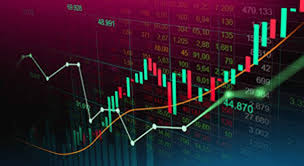Helpline and Support
9928646440
Our Address
Doongri Kalan, Doongarsi Ka Bas
Send an Email

Forex trading is a vast and complex field that offers significant opportunities for traders around the world. It involves the buying and selling of currencies, leveraging price fluctuations to make profits. However, before diving into this exciting world, it is crucial to understand the fundamental concepts, strategies, risks, and tools involved. Whether you are a seasoned trader or a complete novice, this guide aims to equip you with essential knowledge for successful Forex trading. For more insights, check out forex trading acev.io.
The foreign exchange market, often referred to as Forex or FX, is the largest financial market in the world. It operates 24 hours a day, five days a week, facilitating the exchange of currencies between banks, businesses, and individuals. The Forex market is decentralized, meaning there is no centralized exchange, and trading is done over-the-counter (OTC) through a global network of banks and brokers.
In Forex trading, currencies are quoted in pairs (e.g., EUR/USD, USD/JPY). The first currency in the pair is the base currency, while the second is the quote currency. A trader speculates on the movement of one currency against another. For instance, if you believe the Euro will strengthen against the US Dollar, you would buy the EUR/USD pair. Conversely, if you believe the Euro will weaken, you would sell the pair.
To get started in Forex trading, you need to understand some basic concepts:

One of the keys to successful Forex trading is having a well-defined strategy. Here are some common strategies used by traders:
Scalping involves making numerous trades throughout the day, aiming to profit from small price changes. Traders typically hold positions for just a few seconds to minutes.
Day trading involves opening and closing positions within the same trading day. Day traders do not hold positions overnight to avoid exposure to overnight risk.
Swing trading focuses on capturing price swings over a period of several days to weeks. Traders use technical analysis to identify optimal entry and exit points.
Position trading involves holding trades for an extended period, often weeks or months. This strategy is based on long-term fundamentals rather than short-term price action.
Utilizing the right tools and resources can significantly enhance your Forex trading experience:
Robust trading platforms like MetaTrader 4, MetaTrader 5, and various proprietary platforms offered by brokers provide essential tools for charting, analysis, and executing trades.

Economic calendars keep you updated on important economic events and indicators that could affect currency values, such as interest rate decisions and employment reports.
Staying informed on market news and analysis allows traders to make well-informed decisions. Many brokers provide market insights and updates to help their clients navigate the market.
Risk management is a crucial aspect of successful Forex trading. Here are some strategies to protect your capital:
Always use stop-loss orders to limit potential losses and take-profit orders to secure profits at designated levels.
Calculate the appropriate position size based on your account balance and risk tolerance. Many traders risk no more than 1-2% of their capital on any single trade.
Diversifying your trades across different currency pairs can reduce risk, as it minimizes the impact of adverse movements in any individual asset.
Forex trading offers an exciting opportunity for anyone looking to engage in financial markets, but it is essential to approach it with knowledge, preparation, and caution. By understanding the basics, developing a trading strategy, utilizing the right tools, and effectively managing risks, traders can navigate the complexities of the Forex market more confidently. Whether you are just starting your trading journey or looking to enhance your existing strategies, continual learning and practice are the keys to long-term success.
Helpline and Support
Our Address
Send an Email